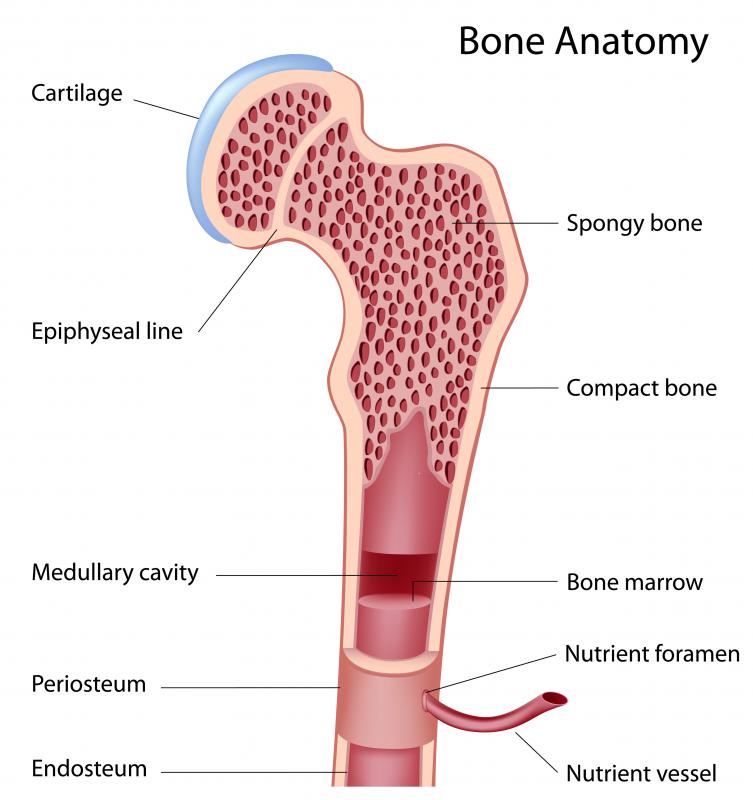At WiseGEEK, we're committed to delivering accurate, trustworthy information. Our expert-authored content is rigorously fact-checked and sourced from credible authorities. Discover how we uphold the highest standards in providing you with reliable knowledge.
What is Autologous Bone Marrow?
Autologous bone marrow is the bone marrow harvested from one’s own body. It is typically used in a bone marrow transplant if a donor cannot be found. If the bone marrow is healthy enough, it also reduces or eliminates the risk of tissue rejection in the patient. The autologous bone marrow can be retrieved ahead of time and frozen for use later.
The use of autologous bone marrow is important in the treatment of many diseases, including leukemia and lymphoma. Autologous bone marrow can be used in many of these cases as long as the cancer is in remission and the patient is in good general health. The bone marrow is examined and goes through a process that eliminates any malignant cells before it is transplanted.

Harvesting the autologous bone marrow is not a complicated process. It is done in the hospital and under general anesthesia and usually only requires a one-night stay. A long needle is inserted into the iliac crest, or hip bone, which has the most bone marrow, and approximately two quarts of marrow and blood are extracted. Discomfort is minimal, and the body will replenish the bone marrow in about four weeks.

Once the bone marrow is harvested, the transplant procedure is fairly simple. Since bone marrow is a liquid, much like blood, it is administered through an intravenous drip. The can be accomplished in the patient’s hospital room or doctor’s office, as no surgery is involved. The patient is monitored for symptoms of rejection, such as chills, fever, and chest pain, but with an autologous bone marrow transplant, these instances are rare.

The bone marrow includes stem cells, which are considered one of the body’s “master cells." This means these stem cells have the ability to grow into over 200 types of cells. A stem cell transplant can help replace dysfunctional blood cells in the marrow or aid in destroying cancer cells. Autologous bone marrow is also used to diagnose certain diseases and medical conditions.

The risks of an autologous bone marrow transplant can include infection, bleeding, and graft failure, in which the transplanted cells do not thrive. Graft-versus-host disease (GVHD), which means the body attacks the new cells as if they were foreign bodies, can happen. Sometimes, this can be life-threatening. The possible result of an autologous bone marrow transplant is a complete recovery from the disease.
AS FEATURED ON:
AS FEATURED ON:














Discuss this Article
Post your comments